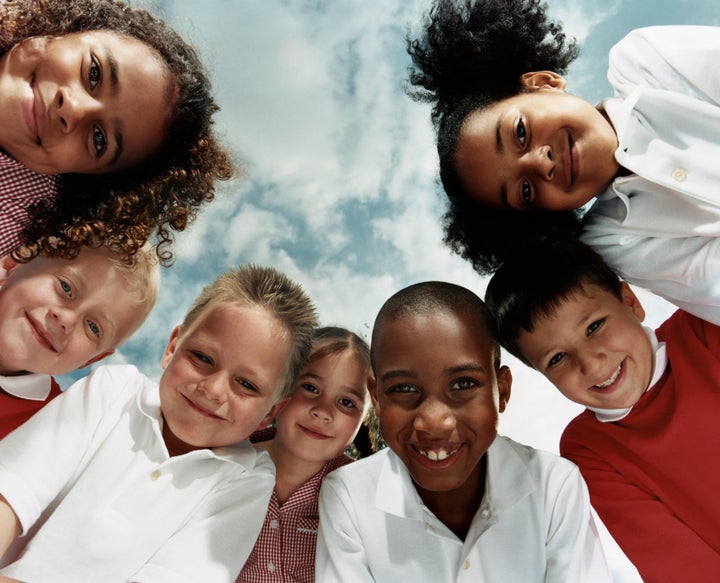
Religious interconnections can seem as tenuous and delicate as the strands of a spiderweb, easily blown to tatters by politics, tribalism, fear, fundamentalism, misunderstanding. But in the decade since 9/11, the yearning for interfaith dialogue and religious tolerance has begun to create a critical density of interwoven threads, more akin to shimmering silk cloth than a fragile web. As the real world shrinks and the online world expands, we have growing opportunities to meet, to exchange ideas and to share religious perspectives.
Interfaith children have intimate lifelong experience with finding and creating these interconnections. We see the common ground: We were born on that ground. We see the differences: We have been grappling with them since birth. We see how to create bridges of understanding: We are those bridges. We see cause for optimism: How can we feel otherwise about our very existence?
And yet, despite these qualifications, despite our lifelong immersion in interfaith reality, interfaith children have rarely been formally included in the "interfaith movement." The dominant, and safe, prescribed model for interfaith discourse follows this formula: two or more people with distinct religious labels meet to shake hands across a boundary, come to a deeper understanding of their own traditions and then retreat to their own closed religious boxes.
These interfaith encounters are carefully structured: invite one Jewish organization, one Christian organization, and one Muslim organization to the podium, or share a meal with one Buddhist, one Hindu, one Pagan, one Secular Humanist. In the acute concern for balance and respect, interfaith children seem to represent the alarming consequence of interfaith dialogue gone wild, of tolerance transformed into physical passion.
Interfaith families quite literally transgress ("step across") religious boundaries to pioneer a new life in the liminal space. We meet the other, embrace the other, fall in love with the other, have children with the other, and many of us refuse to get back inside neat religious identity boxes. As an interfaith child, I celebrate the discovery that the barrier is permeable, that cognitive dissonance can lead to creativity as well as chaos, that I can (as Walt Whitman declared) contain multitudes.
Recently, I have admired the way atheists and secular humanists have staked out a role in the global interfaith discussion. Secular activists including Chris Stedman, Jesse Galef, Roy Speckhardt and Lyz Liddell have overcome their own reservations about being involved in anything with the word "faith" in it, and made a persuasive case for secularists to get involved in interfaith activism.
Meanwhile, organizations devoted to interfaith understanding are reaching out to secularists. Most notably, Eboo Patel's Interfaith Youth Core, a campus phenomenon, now includes many representatives of secular student associations. And President Obama has specifically invited secular "nonbeliever" and "no-faith" students to join the nationwide Interfaith and Community Service Campus Challenge, a national project kicking off this fall.
But interfaith children, natural experts in this field, have not been officially welcomed, whether in high-level interfaith dialogue between religious institutions or in more local grassroots interfaith activism. Perhaps religious institutions fear that acknowledging intermarriage will destabilize the precarious balance of Christians, Jews and Muslims. At the campus level, a growing percentage of students are interfaith children, ready to bring their particular skills and viewpoints to the broad interfaith project. Some interfaith children are providing leadership in these interfaith efforts, but without dwelling on their interfaith status. My point is that we should acknowledge their potential contributions, not ignore them.
"The increasing tendency to overlook the many identities that any human being has and to try to classify individuals according to a single allegedly pre-eminent religious identity is an intellectual confusion that can animate dangerous divisiveness," writes Nobel laureate and Harvard professor Amartya Sen. In his book "Identity and Violence," Sen analyzes how, historically and politically, the reduction of people to a single religious identity can spur conflict. People who assert multiple identities, on the other hand, can be catalysts for positive change. Sen writes about the multiple identities held by each of us (I am a writer, a mother, an American, etc). But as an interfaith child, I make the immediate leap to claiming (the power of) my multiple religious identities: Jewish, Christian, both.
At a press conference for Karen Armstrong's Charter for Compassion project not long ago, I encountered a prominent clergy member involved in interfaith dialogue. When I explained that I was there as a religion blogger chronicling the role of interfaith families in interfaith dialogue, and that this might be of interest to him, he responded, "I work on interfaith relations, not interfaith families." For those of us who are interfaith children, the two subjects are inextricably linked. It is no mere coincidence that the word "interfaith" describes both our personal reality, and our aspirations for the world.
